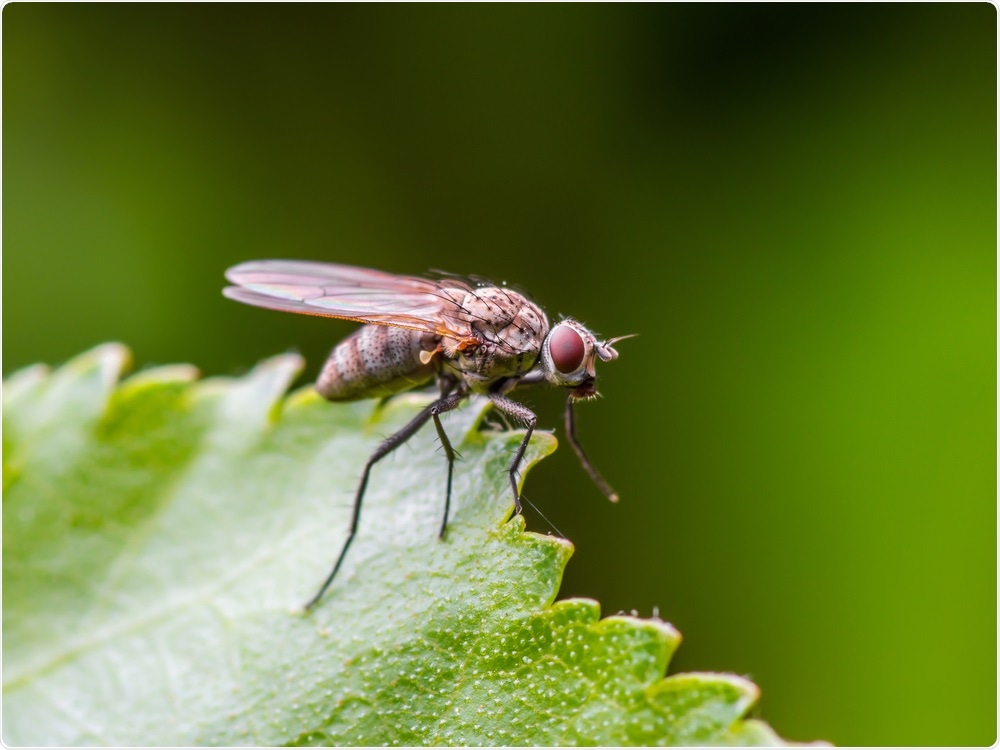Scientists from Skoltech and their collaborators investigated a key element of the insect olfactory system to analyze how this insight might help not just to fight insects but also to use them to the advantage of humans. The study was published in the Molecular Biology Reports journal.

Drosophila fruit fly. Image Credit: nechaevkon/Shutterstock.com
Olfaction means the ability to detect odorous chemical substances and is one of the universal senses of all sorts of living organisms. The significance of this ability for the survival of an organism differs across species. In general, the more significant it is, the more complex structures evolve to offer information about odors and smells.
Olfaction steers a lot of social and sexual behavior in insects, and thus, the chemosensing arsenal of insects is very diverse, where hundreds of genes encode olfactory receptors tuned to particular compounds or ligands.
On the one hand, our interaction with the insect world is of great economic importance. Insects can be both our enemies (agricultural pests, vectors of dangerous infections) and friends (pollinators, producers of food substances). And the sense of smell is an important determinant of their behavior.”
Konstantin Lukyanov, Professor, Skoltech
“On the other hand, the enormous diversity of insect chemoreceptors can find applications in the development of new scientific approaches, for example, in drug screening. The paradox here is that we still do not have a general picture of the olfaction mechanisms in insects,” added Lukyanov.
Lukyanov and Elena Sokolinskaya, a Ph.D. student from Skoltech, were part of the team that investigated the functioning of Orco, a co-receptor at the heart of olfaction in insects, in a HEK293 cell line. Orco is a highly conserved constant subunit of any receptor of the odorant receptor (OR) family, which implied it is highly stable and omnipresent. Therefore, it is the most universal target for analyzing insect olfactory regulation.
We found that the functional “tuning” of the chemoreceptor, for example, its sensitivity and responsiveness, and maybe even the signal transduction mechanism, depends on the identity of its ligand-binding subunit dramatically. This means that the OR family of receptors is very diverse in its molecular functioning mechanisms.”
Konstantin Lukyanov, Professor, Skoltech
The researchers explain that the study results could have implications in repellent design and drug screening. However, Lukyanov adds that research efforts should focus on particular receptors of specific insect species as “it is hardly possible to be guided by the observations and conclusions made only on the Drosophila model.”
At the moment, we can also say that insect chemoreceptors are potentially applicable in ‘mammalian’ chemogenetics; we are currently testing a wider palette of receptors in the primary cultures of electroexcitable cells.”
Konstantin Lukyanov, Professor, Skoltech
Source:
Journal reference:
Kolesov, D. V., et al. (2021) Impacts of OrX and cAMP-insensitive Orco to the insect olfactory heteromer activity. Molecular Biology Reports. doi.org/10.1007/s11033-021-06480-0.